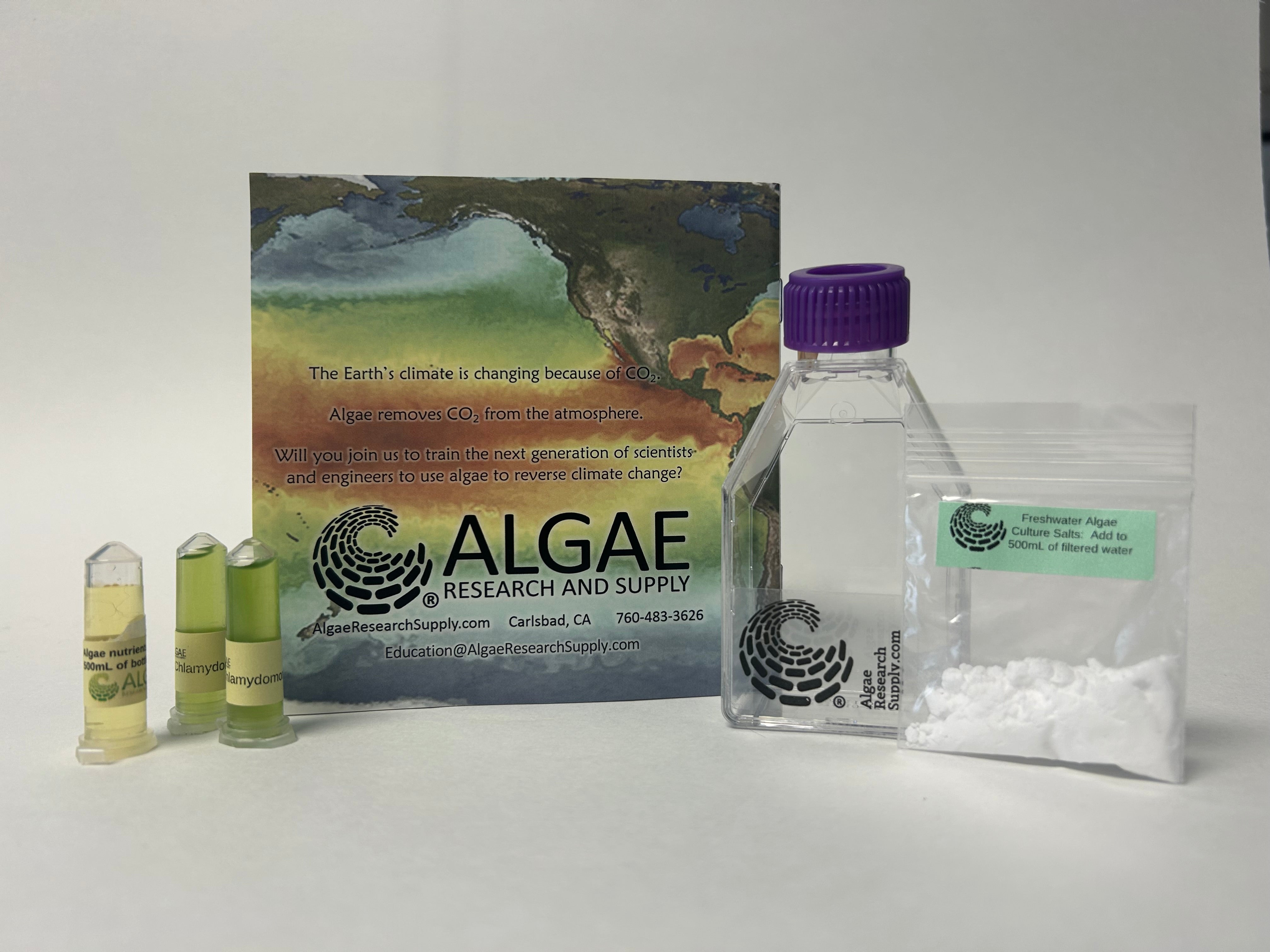





Algae Research Supply: Algae Culture Kit for Chlamydomonas
CHLAMYDOMONAS
About the Algae: Chlamydomonas is a species of unicellular flagellated green algae in the phylum Chlorophyta. Originally isolated in 1945, this species is a model organism for a variety of questions in cell and molecular biology, including the mechanics of flagellar-based motility and phototaxis. In addition to being freshwater, this species is also present in soil, though only in its vegetative stage. This stage is often the immediate product of reproduction in which the cell can split through meiosis multiple times before bursting from the mother cell wall, resulting in 4 to 8 daughter cells. Because of its long history as a model organism C. reinhardtii has also been explored as a source of biofuels and biopharmaceuticals. The cells have been used to produce complex vaccines and therapeutics, explored as a source of pure hydrogen, and even had their channelrhodopsin photopigments used in optogenetics (a method in neurobiology used to explore differential gene expression).
-
Instructions
- Information about the strain of algae
- Culture care lessons
- Illustrated growing protocol
- Lifecycle background of batch-culture cycles
Culture flask
- Tissue culture flask
- (50 ml volume)
- Breathable cap
Culture inoculum
- 1ml in a dense culture in a 1.5ml microcentrifuge tube
Nutrient Fertilizer
- Modified media formula f/2 (Guillard and Ryther 1962, Guillard 1975).
Culturing Salts
- Small bag of salt to make 500ml (1/2 liter) of media
- Salts should be added to a 500ml bottle of drinking water (water not included in the kit)
Pairs well with

Algae Research Supply: Algae Culture Kit for Chlamydomonas


